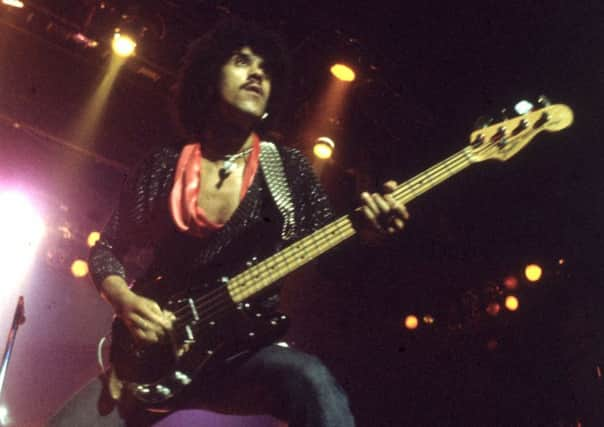Deal agreed to bring Leith Theatre back to life


Now a venue where the likes of AC/DC, Thin Lizzy, Kraftwerk, Slade and Frankie Miller once performed to packed houses is set for a rebirth.
The former town hall built for the people of Leith in 1932 after it was amalgamated into the city of Edinburgh is to become home to the capital’s newest performing arts centre.
Advertisement
Hide AdAdvertisement
Hide AdTwelve years after it was under threat of being sold off and turned into flats, the historic Leith Theatre is being lined up for live music, dance, drama and visual arts events now that a deal has been agreed to bring it back to life.
As well as a 1,000-capacity main arena, the new-look building will have rehearsal and workshop spaces to allow work to be developed on site and help address a shortage of space for artists in Leith.
Edinburgh City Council has agreed to hand control of the building – also known as the Citadel Theatre throughout its history – over to an independent trust, which will lead efforts to carry out a multi-million pound overhaul.
About £200,000 worth of roof repairs will be carried out in the spring by the council. The authority has pledged to maintain the external fabric of the building, which was almost destroyed in the Second World War.
The Leith Theatre Trust has been given an initial five years to secure the long-term future of the building, with a further 30-year lease agreed in principle to give the body “full financial responsibility”.
It has secured control of the building and the neighbouring Thomas Morton Hall, a popular wedding venue, months after research on a growing cultural boom in the area recommended the creation of a new multi-purpose arts centre.
The Leith Creative study found the lack of a dedicated venue for music, theatre, dance and exhibitions was holding back efforts to use the arts to regenerate the area, which is home to 1,148 artists, companies and organisations.
Now it is hoped Leith Theatre, which was used regularly by the Edinburgh International Festival between 1961 and 1988, will once again take centre stage in the world’s biggest cultural celebration.
Advertisement
Hide AdAdvertisement
Hide AdThe new EIF director, Fergus Linehan, has already expressed an interest in expanding his event out of the city centre and reviving its use of Leith Theatre, which is on the official “buildings at risk” register.
It is understood the National Theatre of Scotland is also keen to stage performances there after senior figures were shown around the building.
The Leith Theatre Trust, formed in 2004 in the wake of an outcry over the proposed sell-off, has drawn up a blueprint for the venue’s future after extensive talks with the Scottish Historic Buildings Trust, which is leading efforts to create an arts centre in the nearby Customs House building on the Shore.
John Paul McGroarty, artistic director of the Leith Theatre Trust, said efforts were now being focused on ensuring the building was ready for performances next year.
He added: “Full credit is due to the council for handing the venue to a trust that truly represents the people of Leith.
“Edinburgh really needs a live venue of this size. Leith is changing and it is ready for somewhere like this. Our aim is to have the building fully restored. We will work with all of Edinburgh’s festivals to programme the venue throughout the year.
“We will also work closely with grassroots and community groups to provide rehearsal space and artistic residencies for emerging artists.”
Richard Lewis, the city council’s culture leader, said: “It’s fantastic to see the Leith Theatre Trust take on the lease. Their plan is to raise money to bring the theatre back into use for the arts and continue marketing the Thomas Morton Hall as an events space.”